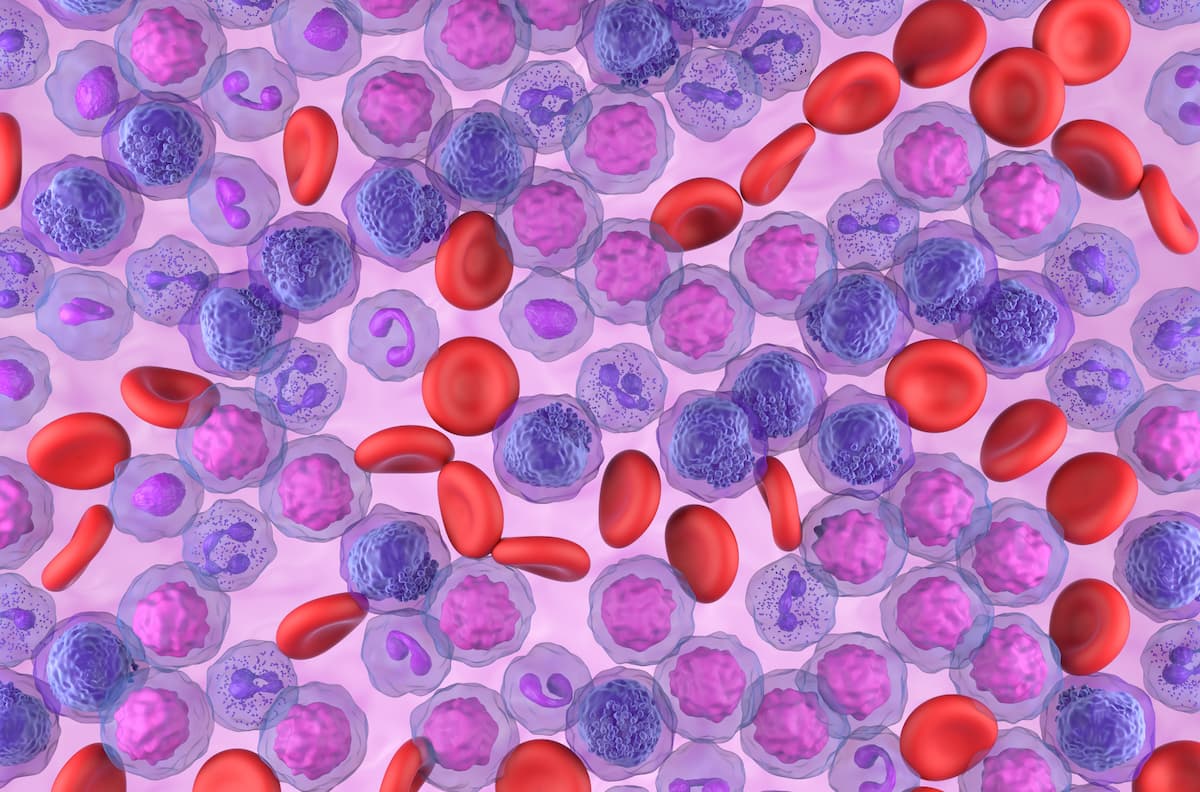Chinese Study Finds Uproleselan/Chemo Does Not Meet OS End Point in R/R AML
Uproleselan plus chemotherapy did not demonstrate clinical benefit over chemotherapy alone, though did show an acceptable safety profile.
Uproleselan plus chemotherapy did not demonstrate clinical benefit over chemotherapy alone, though did show an acceptable safety profile.

A randomized, double-blind, phase 3 bridging trial (NCT05054543) conducted in China evaluating uproleselan (GMI-1271) plus chemotherapy in patients with relapsed/refractory acute myeloid leukemia (AML) failed to meet its primary end point of overall survival (OS), according to a news release from the developer, Apollomics Inc.1
The median OS in the group of patients who received uproleselan/chemotherapy was 9.3 months (95% CI, 6.1-16.0) compared with 14.3 months (95% CI, 6.2-not available) in the group that received chemotherapy alone (P = .48). Regarding safety, the addition of uproleselan to chemotherapy demonstrated an acceptable tolerability profile and was similar to that of the chemotherapy alone arm. Further, 43% of patients in the uproleselan/chemotherapy arm experienced serious adverse effects (AEs) compared with 39% of patients in the chemotherapy arm. The most common serious AEs were decreased platelet count, infectious pneumonia, and sepsis.
“While we are disappointed that uproleselan did not show a clinical benefit, the results were expected given that the global phase 3 trial of uproleselan in a similar patient population by our partner, Glycomimetics, did not meet its primary end point earlier this year,” Guo-Liang Yu, PhD, chairman, and chief executive officer of Apollomics, stated in the press release.1 “Our regulatory and commercial strategy in China has always required a positive global phase 3 trial, and therefore, we are currently wrapping up this program. We extend our thanks and gratitude to all the patients and their families, investigators, and clinical teams that supported the trial.”
A total of 140 patients were enrolled in the trial and randomly assigned, in a 1:1 ratio, to a trial arm that received uproleselan with chemotherapy (n = 69) or a trial arm that received chemotherapy alone (n = 71).2 Randomization was stratified by age (less than 60 years and 60 years or older), disease status (primary refractory/early relapse within 6 months or less and late relapse more than 6 months ago), and hematopoietic stem cell transplantation status.
In the experimental arm, patients received uproleselan with mitoxantrone, etoposide, and cytarabine (MEC) during the induction period, then uproleselan with high-dose cytarabine or intermediate-dose cytarabine during consolidation. In the control arm, patients received a placebo (0.9% sodium chloride) with MEC chemotherapy during induction, then a placebo with high-dose cytarabine or intermediate-dose cytarabine during induction.
The trial had the following phases, in order: screening, baseline, induction treatment and count recovery, response assessment, consolidation treatment (only if remission is achieved), and follow-up for relapse and survival assessment. If a patient does not achieve remission, they will continue follow-up to evaluate disease progression and survival.
Key inclusion criteria included an AML diagnosis with 20% or greater myeloid marrow blasts or peripheral blood blasts per 2008 World Health Organization criteria at the time of initial diagnosis, no more than 1 prior stem cell transplant, not receiving the chemotherapy regimen to be used for induction, for patients with relapsed AML it must be the first or second relapse and remain untreated, and for patients with refractory AML, only cytarabine/daunorubicin/idarubicin can be used as induction chemotherapy.
Patients were excluded from participation if they had acute promyelocytic leukemia, acute leukemia of ambiguous lineage (biphenotypic leukemia), chronic myeloid leukemia with myeloid blast crisis, active signs of central nervous system involvement by malignancy, stem cell transplantation within 4 months of dosing, abnormal liver function, and any immunotherapy or radiotherapy within 28 days of dosing and any other experimental therapy or chemotherapy within 14 days of dosing, among others.
The trial’s primary end point was OS. Secondary end points include remission rate, duration of remission, event-free survival, and rate of severe oral mucositis.
Reference
- Apollomics Announces top-line results for phase 3 bridging trial of uproleselan in China in patients with relapsed or refractory acute myeloid leukemia. News release. Apollomics. December 20, 2024. Accessed December 24, 2024. https://tinyurl.com/yc53wc28
- Study to evaluate the efficacy of uproleselan in combination with chemotherapy in Chinese patients with R/R AML. ClinicalTrials.gov. Updated November 24, 2021. Accessed December 24, 2024. https://tinyurl.com/3dfvtke8